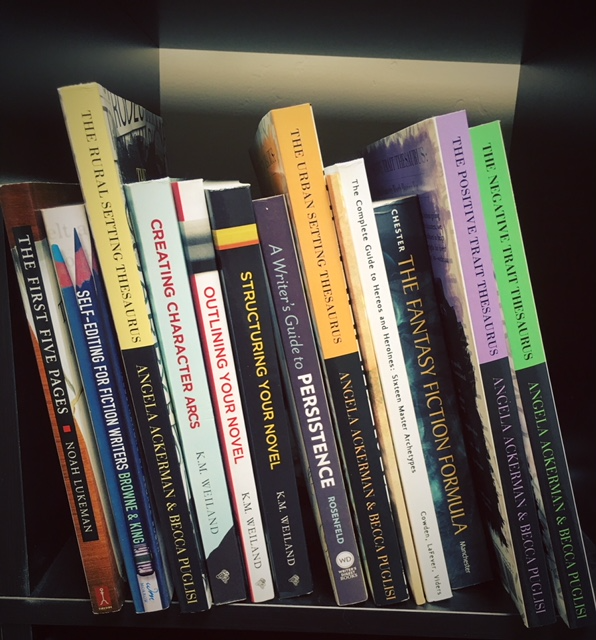 What is a beta reader? It’s someone who can read your freshly completed manuscript and give you feedback before you submit the story to a publisher or agent. Or, if you’re self-publishing, beta readers help you know how to revise your manuscript so that it’s the best it can possibly be before you send it to a hired editor.
What is a beta reader? It’s someone who can read your freshly completed manuscript and give you feedback before you submit the story to a publisher or agent. Or, if you’re self-publishing, beta readers help you know how to revise your manuscript so that it’s the best it can possibly be before you send it to a hired editor.
Beta reading is a significant amount of work. These days there are more and more people offering their services as beta readers for pay. If you choose to use a paid beta reader, check them out in advance. Anyone can call themselves a beta reader – what quality of work can you expect for your money? Is the rate fair? How satisfied are the previous customers?
You might have some eager fans who are happy to give you a beta read in exchange for an early peek at the book. Be sure they have the skills necessary to give you helpful feedback. Enthusiastic readers might not always have the technical knowledge to provide advice for improvement.
My experience to date has been a “barter” system among writers – some published, some not, but all people who I trust to know a good story from a flawed one. Such a system means I can trade my own skills for beta reads. This arrangement might be more challenging if you’ve yet to build a circle of writing associates. If I’m beta reading someone else’s novel, I know that when my next novel is finished, they will be there to beta read it for me. As a double bonus, as writers themselves, they are generally able to express the parts that they found challenging in clear, specific ways.
On that note, beta reading is not editing. If you’re looking for full edits, you should be prepared to hire an editor.
It’s useful to set a deadline for your beta reader to return your manuscript with their comments.
You will need to give yourself time to read the feedback, consider revisions, make those revisions, and get your story submitted before the publisher’s deadline. Ask your beta reader to be sure they can commit to that deadline. Some beta readers don’t understand that they can’t take all the time they want, unless you let them know otherwise. I always add, “If you don’t feel you can get it done by X date, I understand, but since I have time constraints of my own, I need to know that I can count on you.”
The more time you can give your beta reader to read your piece, the better. If I have only two days to beta read a novel, I’m getting very little other work done during those three days. That’s why I’ll only “pinch beta” books for close associates—assuming I can rearrange my schedule to accommodate!
Sometimes life happens, people have emergencies, and deadlines get missed. It’s useful to ask for multiple beta readers in case one has to drop out due to personal emergencies.
When you’re choosing a beta reader, you will need to find someone whom you can trust to keep your manuscript confidential. I’ve worked for a publisher who required beta readers to sign non-disclosure agreements before they read. This measure was taken to prevent beta readers from putting spoilers up on the Internet before the book even went on sale to the general public. If you’ve already signed with a publisher, make sure you know their policy on beta readers.
If you’re self-publishing, looking for an agent, or submitting your manuscript to calls for submissions, then you may not have to think about such agreements, but you do need to trust your beta reader not to plagiarize, post spoilers online, or distribute copies of your manuscript.
Tomorrow we’ll look at beta reader feedback: the good, the bad and the ugly.

 Any good writing website or book worth its salt will tell you your next step is to revise the sucker. Yes, you must do this step. Yes, everyone else hates it, too. Some books or fellow writer humans will advise you to put the book down for a set period of time to let it “rest,” like a good yeast bread needs a good rise. Unfortunately for your book, it doesn’t keep getting better in that resting period like bread does. No, no. It’s still the piece of crap you left a few weeks ago. So instead of the story rising like bread, think of it this way: YOU’RE doing the rising. You walked away for a few weeks and grew wise enough to rise above the piece of crap you made in order to come to a place where you can look past your subjective love of the story and objectively say, “Ah yes, indeed, this is a piece of crap.”
Any good writing website or book worth its salt will tell you your next step is to revise the sucker. Yes, you must do this step. Yes, everyone else hates it, too. Some books or fellow writer humans will advise you to put the book down for a set period of time to let it “rest,” like a good yeast bread needs a good rise. Unfortunately for your book, it doesn’t keep getting better in that resting period like bread does. No, no. It’s still the piece of crap you left a few weeks ago. So instead of the story rising like bread, think of it this way: YOU’RE doing the rising. You walked away for a few weeks and grew wise enough to rise above the piece of crap you made in order to come to a place where you can look past your subjective love of the story and objectively say, “Ah yes, indeed, this is a piece of crap.”